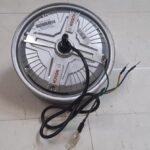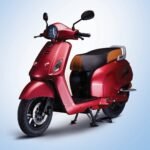
Riding an electric scooter during the monsoon season in India can be both exciting and risky. On one hand, you avoid traffic and enjoy the cool breeze. On the other, your EV is exposed to water, mud, moisture, and slippery roads — all of which can seriously impact your scooter’s performance, safety, and lifespan.
If you’re an EV rider, garage owner, or e-scooter enthusiast, this blog will help you protect your electric scooter during rainy season, prevent common failures, and ensure safe, reliable rides.
Common Monsoon Issues Faced by Electric Scooter Owners
Before we get into maintenance tips, let’s understand what problems riders commonly face:
- Water seepage into the motor or controller
- Throttle malfunction due to moisture
- Short circuits in wiring or connectors
- Battery drainage or performance drop
- Slippery braking, poor tyre grip
- Corrosion of metal components or fasteners
Pre-Monsoon Maintenance Checklist
Prepare your EV before the rain starts:
- Waterproof the controller box
- Use silicon sealant or tape to cover all gaps
- Mount the controller in a higher, covered spot
- Use silicon sealant or tape to cover all gaps
- Shop Controllers
- Check the throttle and brake wiring
- Make sure connectors are tight and clean
- Wrap loose connectors with waterproof tape
- Make sure connectors are tight and clean
- Buy Throttle Parts
- Inspect the battery casing
- Ensure no cracks or loose seals
- If needed, add a rubber gasket around the battery cover
- Ensure no cracks or loose seals
- Explore EV Batteries
- Upgrade your tyres if worn out
- Good grip is essential on wet roads
- Consider tubeless or patterned treads for better traction
- Good grip is essential on wet roads
- Tyres & Wheels

Daily Maintenance During Monsoon
Once the rains start, follow these steps to keep your scooter safe:
1. Dry the EV After Every Ride
- Use a microfiber cloth to clean water from throttle, seat, controller, and ports
- Never leave it soaked overnight
2. Cover the Scooter When Parked
- Use a waterproof EV cover
- Park under shade or indoors if possible
3. Avoid Potholes and Waterlogging
- Riding through flooded roads risks motor and controller failure
- Water can enter wheel hubs and bearings
4. Use Dielectric Grease on Terminals
- Apply a small amount to battery connectors and fuse points
- Prevents moisture-induced corrosion
5. Charge Indoors or in Dry Areas
- Always unplug the charger before rain starts
- Avoid using roadside power sources during heavy rain
Electrical Protection Tips
Electrical damage is the #1 risk during the rainy season. Here’s how to prevent it:
Use Waterproof Connectors
Switch standard exposed connectors with sealed or rubber-covered ones.
Elevate the Controller
Mount it above the footboard level and inside a waterproof box.
Replace Faulty Fuses or Circuit Breakers
Keep 1–2 spare 30A or 40A fuses in your toolbox for emergencies.
Use Rain Guard Tapes or Heat-Shrink Tubes
Wrap all open wiring points and joints for extra protection.
Tyre & Brake Care in Monsoon
Safety isn’t just about electronics. Grip and braking matter too.
Check Brake Pads Weekly
- Wet conditions wear out pads faster
- Clean with dry cloth, avoid oil or water contamination
Maintain Tyre Pressure
- Slightly higher pressure helps avoid hydroplaning
- Always check tyres before long rides
Clean Tyres Daily
- Mud buildup reduces grip
- Use a brush to clean treads and avoid skidding
Post-Ride Cleaning Routine (Takes 10 Minutes)
- Wipe throttle, motor, battery box, and controller
- Use dry cloth on display and handlebar
- Check connectors and wiring for water entry
- Clean mudguards and footboard
- Store in a dry, covered area
Optional: Keep a small tool kit with spare fuses, throttle, and connectors.
Accessories & Tools
Additional Tips for Garage Owners & B2B Riders
If you manage a garage or a fleet of EVs:
- Offer waterproofing services for throttle, controller & display
- Keep spare parts in stock — throttle, controller, chargers, fuse
- Use a hair dryer or blower to dry flooded motors safely
- Train staff in rain-specific inspection protocols
What NOT to Do in Monsoon
- Don’t charge the scooter in wet or open areas
- Don’t cover wet scooters immediately — let them air dry
- Don’t ignore flickering lights or jerky acceleration
- Don’t ride aggressively on muddy roads
Quick Monsoon Checklist for EV Riders
| Task | Frequency |
| Dry scooter after ride | Every time |
| Check throttle & controller | Weekly |
| Inspect brakes & tyres | Weekly |
| Clean charging port | Every 2–3 days |
| Apply grease or lubricant | Weekly |
| Cover scooter when parked | Always |
Must-Have Monsoon Products
Here’s a quick shopping list to get monsoon-ready:
Final Thoughts
Monsoons in India are beautiful — but only when your EV runs smoothly through them. With regular maintenance, a little waterproofing, and the right spare parts, you can enjoy stress-free rides all season long.
Don’t wait until your scooter stops in the middle of a flooded street. Prepare today and ride with confidence.
Shop all EV parts: https://electricscootersparts.in/





